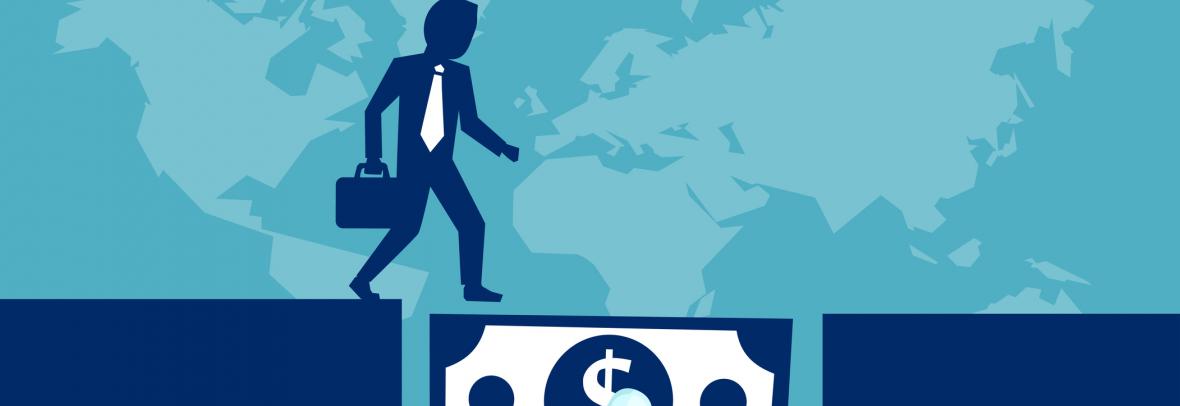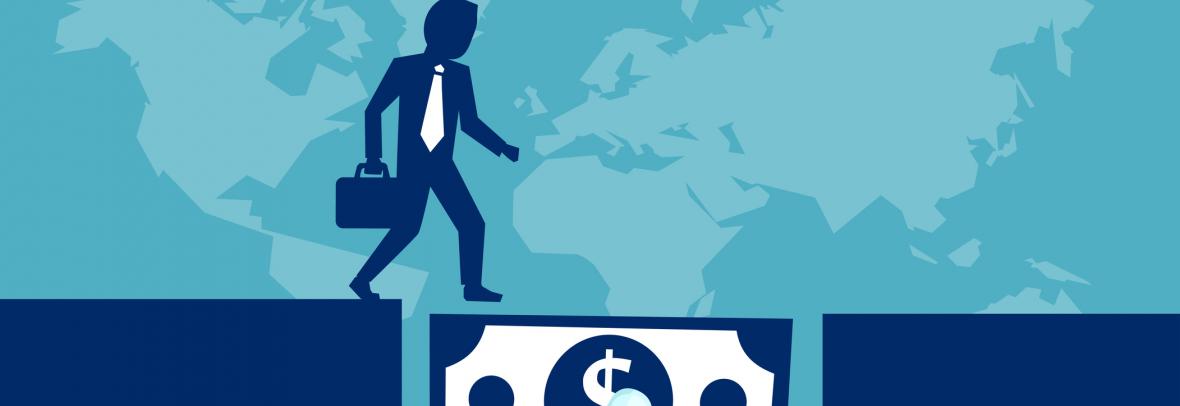
In movies, hopeful business owners make their case before a banker and hope for a loan. But there are more options, such as SBA loans or a line of credit.
NEW YORK – For the first time since the coronavirus pandemic began, small businesses in 2022 reported rising revenues and increased employment over the previous 12 months. That’s according to the Federal Reserve’s 2023 Small Business Credit Survey. The survey also found that the share of firms operating profitably rose substantially.
Among the employers surveyed, 40% applied for financing in the year leading up to fall 2022. That was up significantly from the year prior, during which only 25% said they applied for financing. The current level more closely resembles pre-pandemic application levels. Nearly 4 in 5 business financing applications were at least partially completed, but only about half were fully approved, the survey shows.
During the pandemic, as companies struggled, many did not qualify for traditional financing and turned instead to government recovery programs. At the time of the most recent survey, some recovery programs were still available, and 34% of employer firms had sought pandemic-related financial help during the previous 12 months. But as those pandemic-related programs wrapped up, the share of firms turning to traditional financing in the form of loans, lines of credit, or merchant cash advances rose once again.
Credibly used the Small Business Credit Survey to identify the most common sources of financing that small businesses apply for. The financing sources are ranked by the share of businesses that sought each type of funding. The findings include only small businesses that are employers.
5. Personal loan (tie)
- Application rate: 7%
- Share of applicants at least partially approved: 70%
Personal loans are now easier to get through so-called “peer-to-peer” lending, in which individuals or companies are matched online with lenders. The average annual percentage rate (or APR) for a two-year personal loan in May 2023 was 11.23%, according to the Federal Reserve. By comparison, the average interest rate for a credit card was about 19%. One major plus for personal loans: They can be used for almost any purpose.
5. Merchant cash advance (tie)
- Application rate: 7%
- Share of applicants at least partially approved: 90%
A merchant cash advance is an advance on future sales, in which the financing provider is buying those future revenues at a discount in return for quick cash now. If you’re the merchant, you will need to set aside a percentage of your credit card and debit transactions, sometimes with an additional fee. Among the benefits, less collateral is needed, credit scores are less important than for a traditional loan, and the financing provider can be flexible about remittances.
However, merchant cash advances are often less regulated, so the costs can be higher than a traditional loan, and a merchant who fails to satisfy the terms can get sued. They do not have interest rates like business loans; instead their cost of financing is offered with factor rates. Unlike an interest rate, factor rates are decimal figures set by financing providers; it is multiplied by the financing amount to calculate the total amount a merchant has to remit. Factor rates can vary widely, from 1.1 to 1.5, according to NerdWallet.
4. Auto or equipment loan
- Application rate: 12%
- Share of applicants at least partially approved: 87%
Equipment financing helps business owners pay for expensive investments in equipment, machinery, and vehicles that can make all the difference for companies trying to grow. Typically the equipment purchased will be used as collateral for the loan. Equipment financing companies offer such loans, as do banks and the Small Business Administration – with rates ranging from 4% to 30%, according to NerdWallet.
The cost of car loans is on the rise, with the average annual interest rate for a new car loan at 7% in March 2023, up from 4.5% a year earlier. Rates in the last months have been the highest since 2008. Monthly payments to finance new cars also are at an all-time high. In March, the average monthly payment reached $730, according to the automobile website Edmunds.
3. SBA loan or line of credit
- Application rate: 23%
- Share of applicants at least partially approved: 64%
Small Business Administration loans have no minimum loan amount, but its popular 7(a) loan is capped at $5 million. The federal backing offers access to low-rate bank financing, with different types of loans and lines of credit and varying eligibility requirements. By reducing the risk to lenders, the SBA makes it easier for small businesses to get needed funding. The most typical SBA loan is known as 7(a), with interest rates of about 7% to 9.5%.
One possible drawback is that it can take a few months to be approved. The SBA also makes direct low-interest loans, but only in the case of an officially declared disaster.
2. Business loan
- Application rate: 34%
- Share of applicants at least partially approved: 66%
A small business loan is intended for the many costs associated with running a business, from an immediate need to pay unexpected bills to more ambitious projects such as an expansion. Besides being available from the SBA, business loans can be obtained from community and commercial banks, online lenders, and from peer-to-peer lenders.
There are a number of different kinds, such as microloans for smaller loan amounts and faster repayment schedules or commercial real estate loans for buying property. One of the most common are term loans, which are usually repaid in fixed amounts plus interest (or with factor rates) and can be put to a variety of uses.
1. Business line of credit
- Application rate: 43%
- Share of applicants at least partially approved: 76%
A business line of credit provides an amount of credit that a business can draw on and receive as cash. Interest is paid on the amount borrowed, much like paying for a cash advance on a credit card. The advantage is a business can borrow as needed for an unexpected opportunity or an expense.
The cost varies with the lender and depends on credit scores, business revenue, and other criteria. Amounts available can range from $2,000 to $250,000, with rates from around 10% and up, according to Forbes.
© Copyright 2023 The Daily Tribune News, all rights reserved. This story originally appeared on Credibly and was produced and distributed in partnership with Stacker Studio. Data reporting by Paxtyn Merten, story editing by Jeff Inglis and copy editing by Tim Bruns.
Go to Source
Author: kerrys



